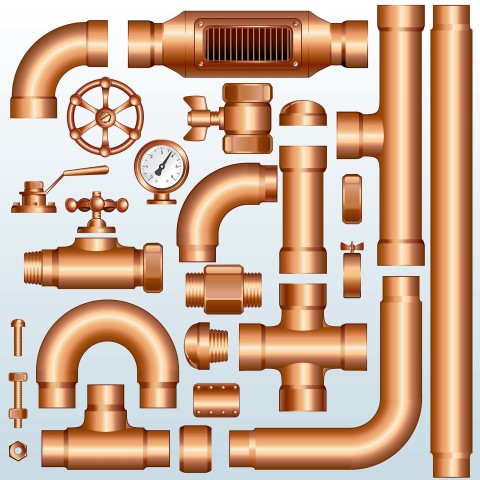The alloy brass comes in many forms. It is available as a long brass tube or a piece of large sheet metal, for example. These variations are possible because of brass’ properties that make it among the most versatile alloys in existence today. It is also one of the most sought-after alloys because of its many favorable qualities, foremost of which is its resistance to certain types of corrosion. Additionally, brass boasts acoustic properties, malleability, low friction, low melting point, good flow capabilities when melted, bacteriostatic properties, good heat and electric conductivity, favorable aesthetics, and many more.
Altering Compositions
Brass not only comes in many forms, but also in many types, made distinct from each other through their individual composition. The main component of brass is copper mixed with zinc, and the percentage of the two metals can be altered to modify certain properties. Moreover, other elements can be put into the mix to create different effects. The element and how much of it is added depend on what property is required for a specific application. Copper Alliance explains the effects of adding certain elements.
Lead. This is the most common element added to modify the properties of brass. Lead does not form a solid solution, but rather is present throughout the alloy as a discontinuous phase. The addition of lead improves machinability.
Tin. One per cent of tin is added to brass intended for seawater service. The addition further enhances the corrosion resistance of brass.
Silicon. The addition of this element provides additional wear resistance and strength to brass. It is also sometimes added to filler alloys for gas welding and die casting brasses for reduced oxidation of zinc and fluidity assistance.
Arsenic. This is added in small amounts to better protect the alloy from dezincification corrosion, or the removal of zinc from the alloy.
Nickel. Brasses with nickel added are considered special brasses and referred to as nickel silvers. They have a silvery color and appearance instead of the usual color of brass. Nickel silvers have better resistance against tarnishing and stress corrosion cracking.
Sample Uses
Brass can be found in numerous industries, and are used in a wide range of applications. You can find machinists using brass hammers as they allow delicate steel machining without causing damage marks. With the combination of its light weight, tonal quality, and malleability, brass is an ideal material for many musical instruments. The conductivity makes it useful for electronic devices, particularly as contacts for speaker wires.
You can also see round or square brass tubing used in homes for such diverse uses as railings and plumbing pipes. You can get the type or form you need from established and noted suppliers like Rotax Metals.
Sources:
(Section 6 – TYPES OF BRASS, Copper Alliance, undated)
(What are the Different Uses of Brass?, WiseGeek, undated)


